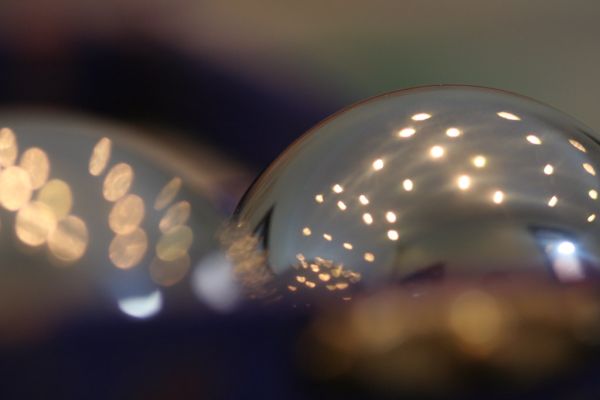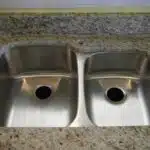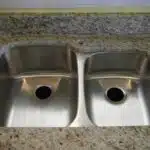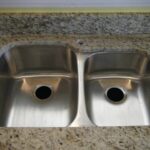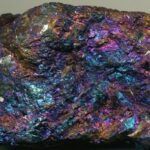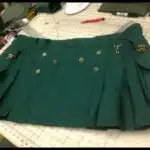Metal surfaces can be found in various areas of our lives, from household appliances to industrial machinery. Keeping these surfaces clean and well-maintained is essential for their longevity and optimal performance. Cleaning metal may seem like a simple task, but it requires knowledge of the different types of metals, the best cleaning agents to use, and the right cleaning techniques. As a metal cleaning expert with years of experience, I have compiled a comprehensive guide on how to clean metal effectively.
Before you begin cleaning any metal surface, it is crucial to understand its composition and properties. Different metals require different cleaning methods, as some are more susceptible to damage than others. Factors such as the type of metal, level of oxidation or rust, and the intended use of the object should be considered when deciding on a cleaning approach. In this article, I will provide detailed insights into how to identify various metals and the best practices for maintaining their appearance and integrity. Whether you are looking to restore an antique piece or maintain your home’s stainless steel appliances’ shine, this guide will equip you with all the necessary tools to achieve optimal results.
Understanding The Different Types Of Metal
Metal cleaning is a task that requires understanding of the different types of metal to be cleaned. Differentiating alloys is essential to avoid damages and ensure proper cleaning. Alloys are metals that consist of a mixture of two or more elements, including aluminum, brass, bronze, and stainless steel. It is crucial to identify the type of alloy before starting any cleaning process as each has unique properties and may react differently to certain cleaners.
Identifying corrosion types is also an important aspect of metal cleaning. Corrosion happens when a metal reacts with its environment, resulting in degradation and loss of functionality. There are four common types of corrosion: galvanic corrosion, pitting corrosion, crevice corrosion, and general corrosion. Each type has distinct characteristics and requires specific cleaning techniques.
As a metal cleaning expert, it is my responsibility to educate clients on the different types of metal to ensure effective and safe cleaning methods are used. By understanding alloys and identifying corrosion types before starting the cleaning process, one can avoid significant damages or even complete failure in achieving desired results. In the subsequent section about common metal cleaning challenges, we will discuss specific examples where this knowledge can make all the difference in achieving optimal results for your metal surfaces.
Common Metal Cleaning Challenges
Metal cleaning is an essential process to maintain the appearance and functionality of various metal surfaces. However, it can be challenging to keep metal clean due to various factors such as corrosion, oxidation, and damage caused by harsh chemicals. Identifying these challenges is crucial in determining the appropriate cleaning method for different metals.
One of the most common metal cleaning challenges is identifying corrosion. Corrosion occurs when metal surfaces react with moisture and oxygen in the air, causing rust to form. This can make metal surfaces look dull and unsightly while also weakening them over time. To tackle this issue, it’s important to use a cleaning method that removes rust without damaging the underlying metal.
Another challenge is protecting metal surfaces from damage during the cleaning process. Some metals are more sensitive than others, and using harsh chemicals or abrasive tools can cause scratches or other forms of damage that compromise their structural integrity. It’s essential to choose cleaning products that are gentle on specific types of metals while still effectively removing dirt and grime.
Overall, addressing common metal cleaning challenges involves a combination of identifying specific issues such as corrosion or potential damage from harsh chemicals and choosing appropriate cleaning methods that address these issues without causing further harm to the surface being cleaned. In the subsequent section, we’ll explore how to identify rust and oxidation on various types of metals so you can create a comprehensive cleaning plan that keeps your metal surfaces looking great for years to come.
Identifying Rust And Oxidation
Ironically, the most common metal cleaning challenge is also the most basic: figuring out how to clean metal. While it may seem like a simple task, there are countless variables that can impact the effectiveness and safety of your cleaning efforts. One of the most important factors to consider when cleaning metal is preventing rust and oxidation.
Identifying rust is a critical step in any metal cleaning process. Rust occurs when iron or steel is exposed to oxygen and moisture over time. The result is a coating of reddish-brown flakes that can be unsightly, difficult to remove, and potentially damaging to the metal surface. To prevent rust from forming on your metal objects, it’s important to keep them dry and free from standing water.
Oxidation is another common problem facing those who want to clean their metal objects effectively. This occurs when metals react with oxygen in the air or water, resulting in a tarnished appearance that can be unattractive or even harmful. To prevent oxidation from occurring on your metal surfaces, consider using protective coatings or finishes that will shield them from exposure to air and moisture.
- Use a soft-bristled brush or sponge for gentle yet effective cleaning
- Avoid using harsh chemicals or abrasive tools that can scratch or damage your metal surfaces
- Consider using specialized cleaning products designed specifically for different types of metals
As a professional in the field of metal cleaning, I strongly recommend taking these steps seriously if you want to ensure the longevity and beauty of your precious metals. By identifying rust and preventing oxidation through careful attention to detail and proper maintenance techniques, you can keep your metal objects looking great for years to come. In our next section, we’ll explore some tips for choosing the right cleaning tools and products for different types of metals.
Choosing The Right Cleaning Tools And Products
When it comes to cleaning metal, choosing the right tools and products is crucial to ensuring a successful outcome. Different metals require different cleaning methods, so it’s important to use the appropriate tools and products for each specific item. For instance, when cleaning metal jewelry, you should use a soft-bristled brush or cloth that won’t scratch or damage the delicate surface.
When it comes to cleaning metal outdoor furniture, a more heavy-duty approach may be necessary. In this case, you may want to use a pressure washer or abrasive cleaner to remove built-up grime and dirt. However, it’s important to ensure that the product you’re using is safe for outdoor use and won’t cause damage or discoloration.
Ultimately, the key to choosing the right cleaning tools and products is understanding the unique needs of your specific metal item. Take into account factors such as its age, condition, and intended use when selecting your supplies. By doing so, you’ll be able to achieve optimal results while also minimizing any potential harm or damage to your precious items. Now that we’ve covered how to choose the right cleaning tools and products for your metal items let’s move on to preparing the surface for cleaning.
Preparing The Metal Surface For Cleaning
Surface preparation is a crucial step in cleaning metal. Before attempting to clean the surface, it’s important to ensure that it is free from any loose dirt or debris. Wipe down the surface with a clean cloth or brush to remove any visible particles. This will ensure that the cleaning solution can work effectively.
Chemical reactions are an essential part of metal cleaning. When preparing the surface, it’s important to choose the right cleaning solution for the type of metal being cleaned. Some metals may react negatively with certain chemicals, causing them to corrode or discolor. It’s always best to do a small test patch before applying any cleaning solution to the entire surface.
Surface preparation is an essential step in ensuring that your metal surfaces are clean and well-maintained. By removing loose dirt and choosing appropriate cleaning solutions, you can achieve optimal results when it comes to removing dirt and grime from your metal surfaces. Chemical reactions play a vital role in this process, so be sure to choose your cleaning solutions carefully based on the type of metal you are working with.
Removing Dirt And Grime
As the saying goes, “a little elbow grease goes a long way.” When it comes to removing grime from metal surfaces, this idiom holds true. The first step in this process is to assess the type and severity of the grime. This will determine the cleaning techniques you’ll need to employ.
For light grime buildup, simply wiping the surface with a damp cloth may suffice. However, for more stubborn stains and dirt accumulation, you’ll need to use specialized polishing techniques. One such technique is using a metal polish cream and a soft-bristled brush to gently scrub away grime. Be careful not to apply too much pressure, as this can scratch the surface of your metal object.
Another effective polishing technique is using a mixture of baking soda and water. Apply this paste onto the affected area and let it sit for 10-15 minutes before wiping it away with a clean cloth. This method works wonders on stainless steel surfaces and can help remove any difficult-to-remove dirt or grime that has accumulated over time.
By utilizing these polishing techniques, you can keep your metal objects looking their best year-round. However, when it comes to tackling stubborn stains and rust, more intense cleaning measures will be required. Let’s explore some of these methods in our subsequent section on tackling stubborn stains and rust.
Tackling Stubborn Stains And Rust
Dealing with corrosion and stubborn stains can be a challenging task for metal cleaning enthusiasts. While some may resort to harsh chemicals, there are effective cleaning techniques that can help tackle these problems without causing any damage to the metal surface.
One of the most effective ways to remove rust from metal surfaces is by using a mixture of baking soda and water. This solution can be applied to the rusted area with a cloth or sponge and left for several hours before being wiped away with a clean cloth. Additionally, white vinegar can also be used as a natural rust remover. Simply soak the affected area in vinegar for a few hours before scrubbing away the rust.
Another important step in tackling stubborn stains is to use specialized cleaning products that are designed specifically for certain types of metal surfaces. For instance, copper and brass require different cleaning solutions compared to stainless steel or aluminum. It is crucial to read the instructions carefully before applying any cleaning products on your metal surfaces.
In conclusion, dealing with corrosion and stubborn stains requires patience and proper knowledge on effective cleaning techniques. By using natural remedies like baking soda or vinegar, or specialized cleaning products designed for specific metals, you can keep your metal surfaces looking shiny and new for years to come. In the next section, we will discuss polishing and buffing stainless steel – another essential step in keeping your metal surfaces looking their best.
Polishing And Buffing Stainless Steel
Polishing stainless steel is a process that involves using a buffing wheel to remove surface imperfections and create a smooth finish. Buffing wheels are made of a variety of materials and are used in combination with compounds, cloths, and cleaning solutions. The right amount of pressure and strokes should be used when buffing, and a finishing shine is achieved through the use of a lubricant, waxes, pastes, and powders. Buffers are also used to achieve a high luster finish on stainless steel surfaces.
Polishing
Choosing the right polishing technique is crucial in achieving a polished metal surface. It is important to select the appropriate polishing material and tools depending on the type of metal, level of tarnish, and desired finish. For stainless steel, it is recommended to use a non-abrasive polish to avoid scratching or damaging the surface. A soft cloth or buffing wheel can also be used for more intricate details.
Maintaining a polished metal surface requires regular cleaning and polishing. It is best to clean the metal using a mild detergent solution or vinegar and water mixture before applying any polishing material. This will remove any dirt, grime, or other contaminants that may interfere with the polishing process. After cleaning, polish the metal in small circular motions until it achieves a high gloss finish.
In summary, choosing the right polishing technique and maintaining a polished metal surface are integral in preserving the appearance of stainless steel. With proper care and attention, stainless steel can maintain its shine for years to come. Remember to always use non-abrasive materials and regularly clean your metal surfaces for optimal results.
Buffing
After discussing the importance of choosing the right polishing technique, let us now delve into the topic of buffing for stainless steel. Buffing is a polishing technique that utilizes a rotating cloth wheel and polishing compounds to remove scratches and achieve a high-gloss finish on metal surfaces. This technique is commonly used in automotive and metalworking industries to restore the shine of metal parts.
Buffing techniques vary depending on the level of tarnish or scratches on the metal surface. For light scratches or dullness, a single-step buffing process may be sufficient. This involves using a buffing wheel with fine abrasive compounds to lightly polish the surface. However, for deeper scratches or heavily oxidized metals, a multi-step process may be necessary. This involves using progressively finer abrasive compounds until achieving the desired finish.
Polishing compounds play an important role in buffing stainless steel. The type and grade of compound used will depend on the type of metal being polished and desired finish. Commonly used compounds include rouge, tripoli, and jewelers’ rouge. Rouge is typically used for final finishing as it produces a high-gloss mirror-like finish while tripoli is ideal for initial rough polishing due to its cutting action. Jewelers’ rouge is best suited for softer metals such as gold or silver due to its gentle abrasive properties.
In conclusion, buffing techniques and polishing compounds are essential in maintaining a polished stainless steel surface. By selecting the appropriate buffing wheel, polishing compound, and technique based on metal type and level of tarnish or damage, one can achieve optimal results in restoring shine to stainless steel surfaces.
Buffing Wheels
When it comes to polishing and buffing stainless steel, the right tools and techniques are essential. One of the key components in this process is the use of buffing wheels. Buffing wheels come in a variety of types and sizes, each suited for specific buffing techniques and applications.
There are several types of buffing wheels available, including spiral sewn, loose sewn, and sisal. Spiral sewn wheels are tightly stitched with multiple layers of cloth for a firm and aggressive cutting action. Loose sewn wheels have fewer stitches per inch, allowing for a softer touch while still removing scratches and blemishes. Sisal wheels are made from natural fibers that provide an even more aggressive cut than spiral sewn wheels.
Choosing the right type of buffing wheel depends on several factors, such as the level of damage to the metal surface, desired finish, and type of metal being polished. It is also important to select the appropriate buffing compound to use in conjunction with the chosen wheel. By selecting the proper combination of buffing wheel and polishing compound based on these factors, one can achieve optimal results in restoring shine to stainless steel surfaces.
Cleaning Copper And Brass
Polishing and buffing stainless steel requires a certain level of expertise, but cleaning copper and brass can be done with ease using simple DIY cleaning solutions. These metals are widely used in decorative items such as lamps, vases, and kitchenware. With proper polishing techniques, you can restore their luster and shine.
Before diving into the cleaning process, it’s important to understand that copper and brass tarnish easily due to oxidation. This means that they develop a dark patina over time. While some people prefer this aged look, most want to restore the original shine. The good news is that copper and brass are relatively easy to clean using common household products such as baking soda or vinegar.
To make your own DIY cleaning solution for copper and brass, mix equal parts of white vinegar and table salt in a bowl. Dip a soft cloth into the mixture and rub it onto the metal surface until it shines. Rinse with water and dry thoroughly with another soft cloth. Alternatively, you can use lemon juice instead of vinegar for a fresh citrus scent. Remember to avoid using abrasive cleaners or scrubbers as they can scratch the metal surface.
| Cleaning Solutions | Ingredients | Instructions |
|---|---|---|
| Vinegar & Salt | – White vinegar – Table salt – Soft cloth | Mix equal parts of vinegar & salt in a bowl. Dip a soft cloth into the mixture. Rub onto metal surface until shiny. Rinse with water & dry thoroughly. |
| Lemon Juice & Baking Soda | – Lemon juice – Baking soda – Soft cloth | Mix 1 tablespoon of lemon juice with 2 tablespoons of baking soda. Apply mixture onto metal surface. Wait for 15-30 minutes before rinsing with water. Dry thoroughly with a soft cloth. |
| Ketchup | – Ketchup – Soft cloth | Apply ketchup onto metal surface. Wait for 10-15 minutes before rinsing with water. Dry thoroughly with a soft cloth. |
Maintaining aluminum surfaces is equally important as cleaning them. To prevent oxidation, apply a thin coat of wax or oil onto the surface after cleaning. This will help protect the metal from further damage and keep it looking shiny for longer periods of time. Remember to always handle metal items with care and avoid using harsh chemicals that could damage the surface. With these tips, you can keep your copper, brass, and aluminum items looking new for years to come.
Maintaining Aluminum Surfaces
Maintaining Aluminum Surfaces:
Aluminum is a widely used metal in various industries due to its durability, lightweight, and corrosion-resistant properties. To maintain the quality of aluminum surfaces, it is necessary to follow proper cleaning and maintenance procedures. One of the essential steps in maintaining aluminum surfaces is preventing any damage caused by scratches, dents or other physical impacts.
Protective coatings are an effective way to prevent corrosion on aluminum surfaces. These coatings act as a barrier between the surface and the environment. Applying a protective coating can prevent moisture from reaching the metal surface, which can cause corrosion over time. Proper storage is also important in maintaining aluminum surfaces. Avoid storing aluminum near chemicals that may corrode it or near sources of heat that can cause warping or melting.
In addition to protective coatings and proper storage, regular cleaning of aluminum surfaces is essential in maintaining their appearance and functionality. Use mild detergents with warm water to clean aluminum surfaces without damaging them. Avoid using harsh chemicals such as bleach or abrasive tools that can scratch the surface. Following these steps will help maintain the quality of your aluminum surfaces for years to come.
Transition:
Now that we’ve discussed how to maintain aluminum surfaces let’s move on to another type of metal – cast iron cookware – and explore some tips on caring for this kitchen essential.
Caring For Cast Iron Cookware
Maintaining aluminum surfaces can be quite different from caring for cast iron cookware, but both require regular cleaning to keep them in pristine condition. When it comes to cleaning metal, there are a few general guidelines that apply across the board. First and foremost, it’s important to avoid using harsh chemicals or abrasive materials that could scratch or damage the surface of the metal. Instead, opt for gentle cleaners that are specifically designed for use on metal surfaces.
One key aspect of caring for cast iron cookware is seasoning the surface to help prevent rust and ensure a non-stick cooking surface. To do this, simply rub a thin layer of oil onto the surface of the pan and bake it in the oven at a high temperature for about an hour. This process not only helps protect the metal from rusting but also helps create a natural non-stick surface that makes cooking with cast iron easier than ever before.
If you do notice rust starting to form on your cast iron cookware, don’t panic! There are several ways to remove rust from cast iron without damaging the underlying metal. One popular method involves creating a paste made from baking soda and water and then using a stiff-bristled brush to scrub away any rust spots. Another option is to soak your cookware in vinegar overnight before scrubbing away any remaining rust with a wire brush or steel wool.
- Use a soft-bristled brush when cleaning metal surfaces
- Avoid using harsh chemicals or abrasive materials
- Always dry metal thoroughly after washing to prevent rust
- Store metal objects in a cool, dry place away from direct sunlight
- Consider investing in specialized cleaning products designed specifically for metal surfaces.
In order to keep your antique metal objects looking their best, it’s important to take proper care when cleaning them. This may involve using specialized products or techniques depending on the type of metal and its age. However, with some patience and attention to detail, you can restore even the most tarnished or degraded metal objects to their former glory. Whether you’re working with antique jewelry, silverware, or other precious metal items, there are a variety of strategies you can use to effectively clean and restore them to their original condition.
Restoring Antique Metal Objects
Antique restoration requires a delicate balance between preserving the object’s historical value and ensuring its longevity. Metal patina is an essential element in antique metal objects, defining their character and uniqueness. As a metal cleaning expert, it is crucial to understand how to clean antique metal objects without tampering with their originality.
To restore antique metal objects, first, remove any surface dust or debris using a soft-bristled brush or microfiber cloth. Next, gently wash the item with warm water and mild soap, avoiding abrasive cleaners or harsh chemicals that may damage the metal’s finish. Once washed, rinse thoroughly with clean water and dry the object immediately with a soft cloth.
While restoring antique metal objects, it’s important to preserve its patina as it adds value to the piece. Patina refers to the natural aging process of metals that gives them a unique look over time. To enhance patina, avoid polishing antique metals excessively as this can strip away some of the natural wear and tear. Instead, use specialized cleaning solutions for specific types of metals such as brass or copper.
| Type of Metal | Cleaning Solution | Method |
|---|---|---|
| Brass | Lemon juice and salt solution | Apply solution with a toothbrush |
| Copper | Vinegar and salt solution | Apply solution with a cloth |
| Silver | Baking soda paste | Rub paste onto silver gently |
In summary, restoring antique metal objects requires special care not to damage their originality while enhancing their unique patina. Ensure you know what kind of metal you are dealing with before selecting specialized cleaning solutions for optimal results. By following these steps closely, you can bring life back into your antique pieces while maintaining their authenticity for future generations to enjoy.
Moving forward into cleaning industrial and heavy-duty surfaces, one must understand the importance of safety precautions when handling powerful machinery in hazardous environments.
Cleaning Industrial And Heavy-Duty Metal Surfaces
Industrial and heavy-duty metal surfaces require specific cleaning techniques to ensure that they are impeccably cleaned. Cleaning metal roofs, for instance, may seem like a daunting task, but it is relatively simple with the right approach. Firstly, using a pressure washer or hose to rinse off loose dirt and debris is essential. Secondly, you can use a soft-bristled brush or sponge with mild detergent to scrub the surface gently. Finally, rinse the surface thoroughly with clean water to remove any remaining soap residue.
Rust stains on metal furniture can be problematic because they not only ruin the appearance of your furniture but also weaken its structure over time. Removing rust from metal furniture requires careful consideration of the type of metal and level of rust. One effective method is to mix baking soda and water until it forms a paste, then apply it onto the rusted area and let it sit for an hour before scrubbing it off with a stiff-bristled brush. Another method involves using vinegar and salt mixture; this works best for small rust stains.
In summary, cleaning industrial and heavy-duty metal surfaces requires customized approaches that take into account factors such as type of metal and level of dirt or rust present. While cleaning methods vary based on specific circumstances, there are general guidelines that one should follow for optimal results. It is crucial to note that prevention is better than cure when it comes to maintaining your metal surfaces’ cleanliness in top condition. In the subsequent section, we will explore tips for preventing future damage and stains on your industrial and heavy-duty metal surfaces.
Tips For Preventing Future Damage And Stains
Preventive measures must be taken if you want to keep your metal surfaces looking clean and polished for a long time. It is important to protect metal from stains, rust, and other types of damage that can occur over time. One of the most effective ways to prevent future damage and stains is to apply a protective coating on the metal surface.
Another preventive measure that you can take is to avoid exposing the metal surface to harsh chemicals or abrasive materials. This includes avoiding contact with substances such as bleach, ammonia, or vinegar. These chemicals can cause discoloration or corrosion on the metal surface.
Long term maintenance of your metal surfaces requires regular cleaning and inspection. Make sure to wipe down the surface regularly with a soft cloth to remove any debris or dirt that may have accumulated over time. Additionally, inspect the surface for any signs of damage or wear and tear, such as scratches or dents. Addressing these issues early on will prevent them from becoming more severe in the future.
Preventive Measures:
- Apply a protective coating
- Avoid harsh chemicals
- Regular cleaning
- Inspection for signs of damage
By taking these preventive measures and implementing long term maintenance practices, you can ensure that your metal surfaces remain clean and polished for years to come. However, there are still common questions about proper metal cleaning techniques that may arise. In the next section, we will address frequently asked questions about metal cleaning.
Frequently Asked Questions About Metal Cleaning
Metal cleaning is an intricate process that requires expertise and knowledge. As such, it is not uncommon for individuals to have questions regarding metal cleaning processes, safety measures, and eco-friendly options. In this section, we aim to address some of the most frequently asked questions about metal cleaning.
One of the primary concerns when it comes to metal cleaning is safety. It is essential to take appropriate precautions when handling chemicals and equipment. Metal cleaning experts always prioritize safety by wearing protective gear such as gloves and goggles. Furthermore, they ensure that the workspace is adequately ventilated to prevent inhalation of potentially harmful fumes.
Another issue that frequently arises in discussions about metal cleaning is environmental impact. Fortunately, there are numerous eco-friendly options available today. A popular method involves using baking soda or vinegar mixed with water to clean metals instead of chemical-based cleaners that can be harmful to the environment. Additionally, many companies now offer green alternatives made from biodegradable materials that are safe for use on metals.
As you can see, there are various factors involved in metal cleaning beyond just removing dirt and grime. By prioritizing safety and exploring eco-friendly options, you can achieve a spotless shine while also doing your part for the planet. Remember always to do your research before starting any cleaning project and follow best practices for optimal results.
Conclusion
As a metal cleaning expert, it is essential to understand the different types of metal and the challenges they present. Rust and oxidation are common issues that can be resolved by choosing the right cleaning tools and products, as well as properly preparing the metal surface for cleaning.
Restoring antique metal objects requires patience and attention to detail, while cleaning industrial and heavy-duty surfaces may require more robust methods. It is crucial to take preventative measures to avoid future damage and stains.
Metal cleaning is not just about restoring surfaces; it’s about preserving memories, history, and art. The shine of a polished brass clock or the luster of a stainless steel sculpture can represent so much more than just an object. They symbolize moments in time, cultural significance, or artistic expression.
As a metal cleaning expert, I take pride in knowing that my work not only restores but also preserves these symbols for future generations to enjoy. By following proper techniques and utilizing quality products, we can ensure that these valuable pieces continue to shine for years to come.
Image Credits
- “Metallic Globes” by INTVGene (featured)

